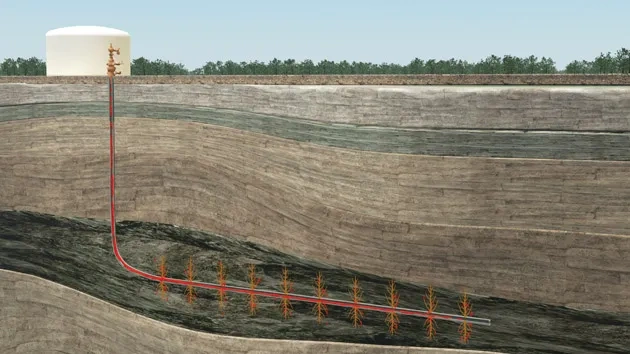Great Ideas on Energy: Better Fracking, Legal Scholarship, Pod Cars
A century ago, The University of Texas was built on energy. Some sources may have changed, but as these brilliant innovations prove, UT is still charging ahead.

11. Use less water in fracking.
Hydraulic fracturing is a process in which fractures in rocks below the earth’s surface are opened and widened by injecting liquids and chemicals at high pressure to extract natural gas and oil. One of the concerns about what is often called “fracking” is that the process can use a tremendous amount of water. For example, Texas’ Barnett Shale requires 2.7 million gallons of water per well.
As Texas remains drought-ridden, Professor Mukul Sharma and grad student Lionel Ribeiro are devoting lab time to developing water-saving techniques that will not only decrease dependence, but also enhance natural gas production.
Sharma, who leads the world’s largest academic research group on the subject, saw that no one else was addressing the issue head on, so his team dedicated itself to discovering solutions.
“We want to reduce the environmental footprint of hydraulic fracturing, and there are three areas that we are working on that provide the best means of meeting that goal,” Sharma says. “These include safe-produced water disposal, reducing fresh water use in oil and gas production, and fracturing water reuse and recycling.”
Armed with this knowledge of what will have the most impact, Sharma and his research group developed a tool to address fracking issues.
“We have built the first fully compositional hydraulic fracturing simulator that is used for fracture design,” Sharma says. “It accounts for three important aspects of the problem critical to accurately predicting the fracture: changes in fluid density, temperature, and fluid composition during fracturing.”
Ribeiro focuses on the reduction of water usage through CO2 and nitrogen foams. These foams reduce the need for water by about 70 percent, and the use of pure CO2 gas almost completely eliminates water from the equation.
“Beyond the environmental impact, the interactions between the rock and the injected water can hinder production,” Ribeiro says. “The CO2 and nitrogen foams outperform water fractures because they don’t cause as much damage to the fracture and the rock maintains its permeability to gas, so overall it is a win-win scenario.”
Sharma and Ribeiro are testing the model in the field and getting positive feedback. If the technique becomes an industry standard, it will take a weight off of Texas’ water sources, allow for more efficient gas production, and provide more abundant natural gas. —Katharine Grieve
12. Start the nation’s only student-run energy law journal.
In 2005, a few UT Law students came up with a big idea: a new legal journal focused on energy issues. The law school had accumulated 11 other journals, but with the time, scholarship, staff, and support each takes, starting a new one takes a real climb.
Founder Nicholas Franklin, JD ’07, and others had to come up with a business plan, revenue streams, subscribers, and more.
Seven years later, the Texas Journal of Oil, Gas, and Energy Law is the country’s only entirely student-run energy law journal. It publishes two print issues annually, plus a blog. Dozens work on it, and prominent firms chip in sponsorships.
The energy law journal has been cited by the Ninth Circuit Court of Appeals and the state supreme courts of Texas and Pennsylvania. “For a journal as young as ours,” editor-in-chief Brock Naeve says, “to be cited by these courts speaks to our prominence in the energy legal field.”—Lynn Freehill
13. Create a futuristic transit system.
Texas’ capital city ranks among the country’s most gridlocked, 2012 could be the costliest year ever at the pump, and our carbon footprint grows ever larger.
The chairman of UT’s Petroleum and Geosystems Engineering Department, Tad Patzek, proposes a solution: podcars.
Podcars are driverless vehicles that run on electricity-powered guideways suspended over existing highways. The concept may seem futuristic, but such cars have already been launched in countries like Sweden and England.
“Podcars cost 10 times less to operate and are 11 times more energy-efficient than today’s vehicles,” Patzek points out. “Also, photovoltaic panels can be installed on the guideways to augment power supply.”
Patzek is moving the concept forward in the U.S. by collaborating with Ron Swenson, one of the scientists leading the charge on podcar development. They both serve on the board of the Association for the Study of Peak Oil, which examines the issues around fossil fuel production.
Podcars are already transporting people at one of the world’s busiest airports, Heathrow in London. Given that, Patzek says, “there is no reason why they couldn’t move people between the main UT campus in Austin and the Pickle campus 10 miles north. This would be a convincing demonstration project for the city.” —Katharine Grieve
Read the next great ideas on energy here.
Image by Erik Zumalt, Cockrell School Faculty Innovation Center.






